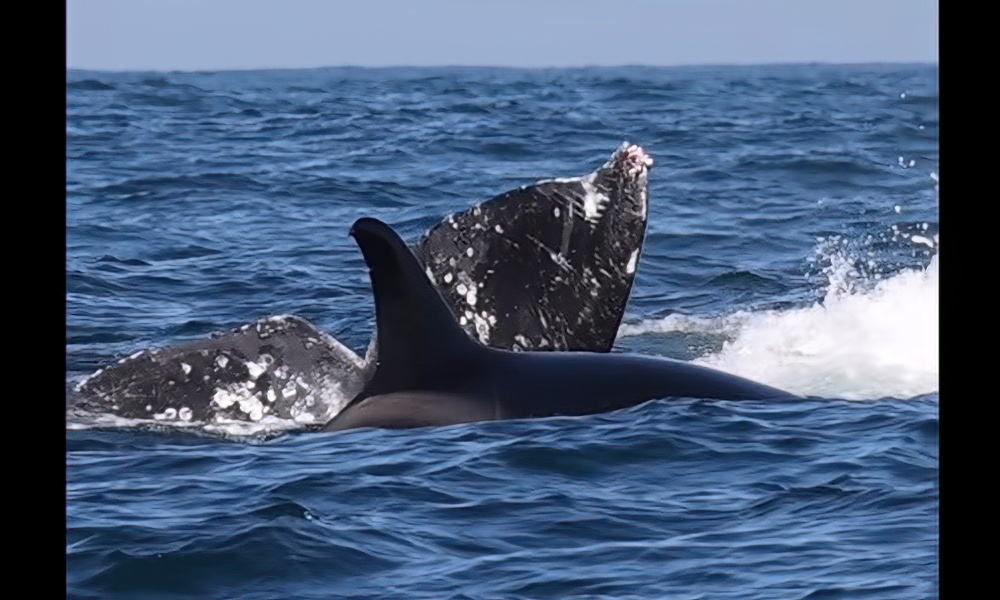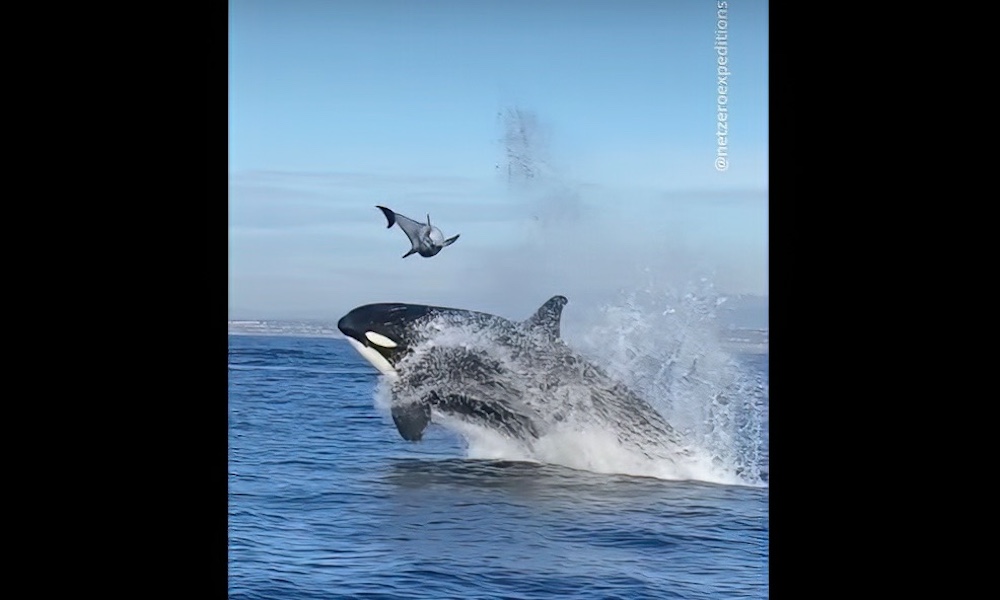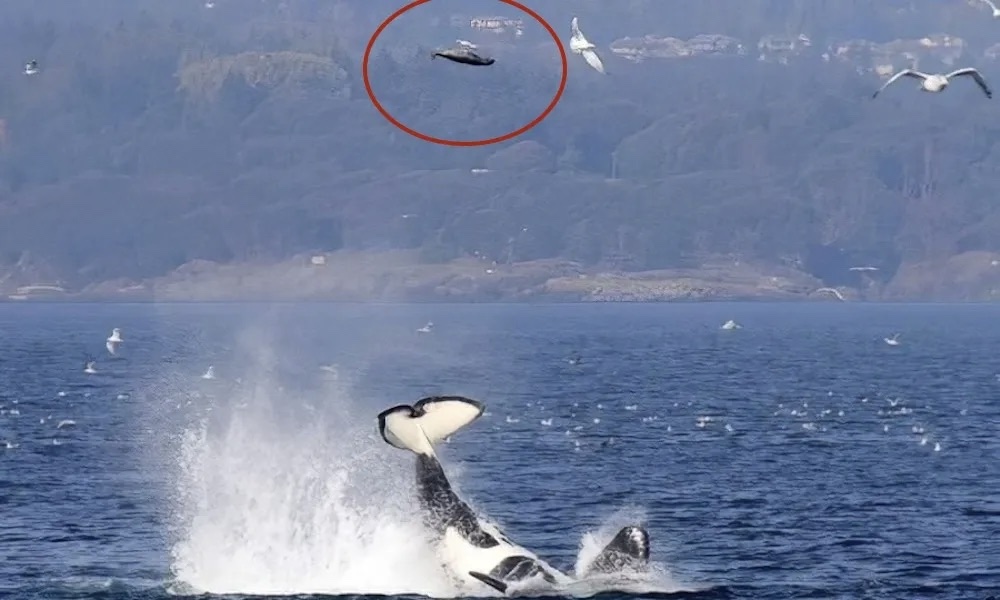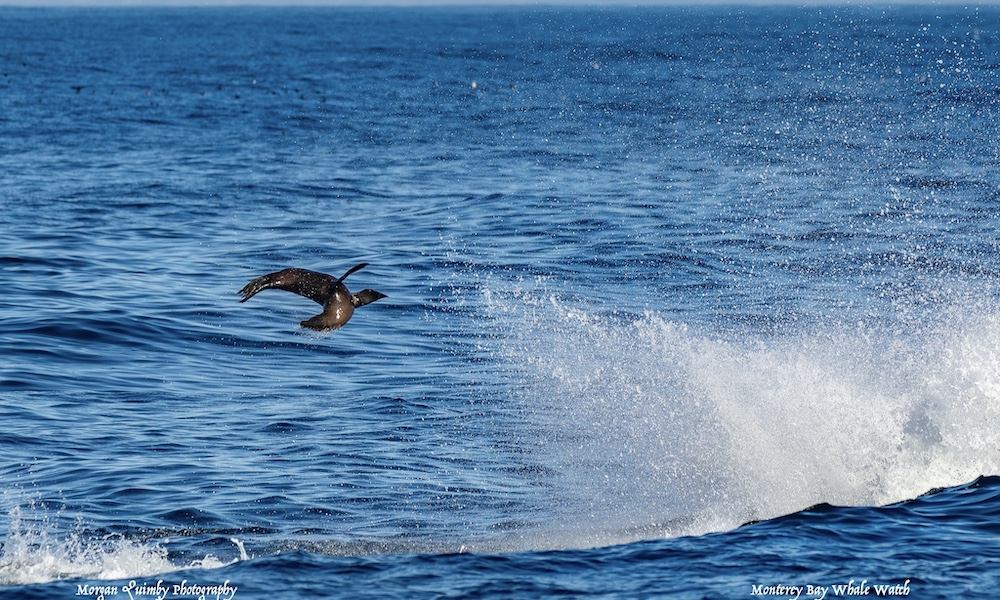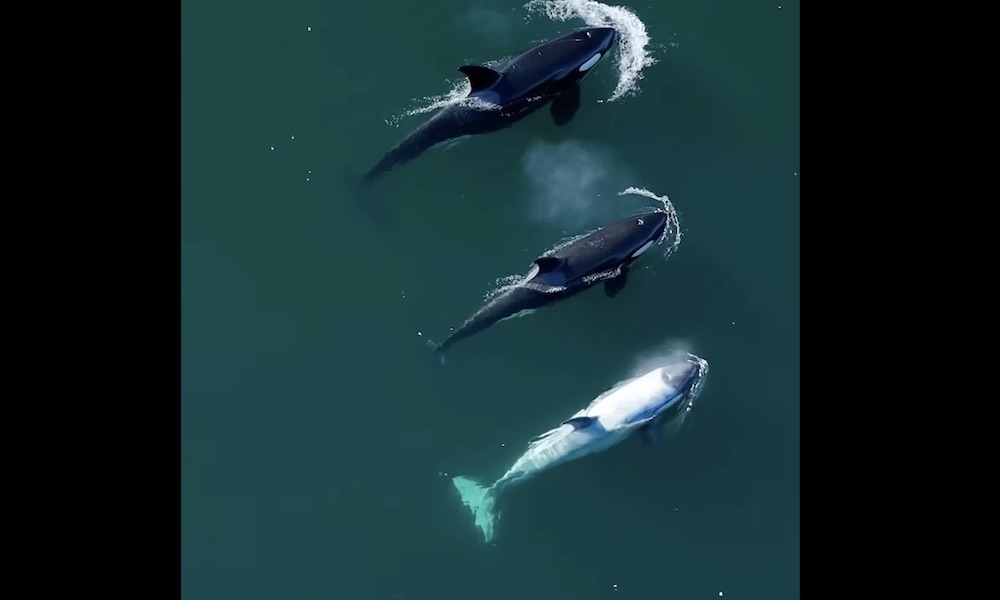Killer whales from Mexico continue to thrill Southern California boaters while preying on dolphins and milling near vessels.
But on Friday off San Diego, a pod of Eastern Tropical Pacific killer whales was documented attacking an adult gray whale in a rarely seen predation attempt that lasted nearly an hour.
The accompanying footage was captured by Capt. Ryan Lawler of Pacific Offshore Expeditions. While the footage is graphic, the gray whale proved too large for the orcas and ultimately continued its migration toward Baja California nursing and mating grounds.
Delaney Trowbridge, also a Pacific Offshore Expeditions captain, described the encounter via Instagram, beginning her post, “Bloodied and bruised, but not broken.”
Trowbridge’s report included an image of the gray whale’s fluke with fresh bite wounds.
She added: “Over the last few weeks we’ve watched the Eastern Tropical Pacific killer whales plow their way through pods of common and bottlenose dolphins, but today their eyes were set on a much larger prize: a massive, adult gray whale.
“Despite their best efforts, lasting nearly an hour in their assault, the orcas abandoned their hunt and moved on.”
View this post on Instagram
Eastern Tropical Pacific killer whales, fairly common in Mexico’s Sea of Cortez, are considered rare visitors to Southern California. But that designation might no longer apply.
Alisa Schulman-Janiger of the California Killer Whale Project told FTW Outdoors that the ETPs have been documented off Southern California 18 different days since last Dec. 11.
While their presence is exciting for marine mammal enthusiasts, not everybody is pleased to see them linger for so long.
Reads one comment beneath Trowbridge’s post: “God Bless this Whale and any others tortured by these Orcas. They seem to be on a serious killing spree off of California and they typically don’t stay this long. This leads to many other concerns.”
Transient killer whales, commonly encountered in Monterey Bay, also visit Southern California sporadically.
Transients also prey on other marine mammals, including gray whale calves that pass through Monterey Bay with their mothers during the northbound migration to Alaska.
